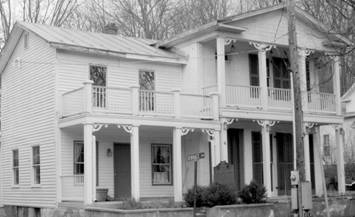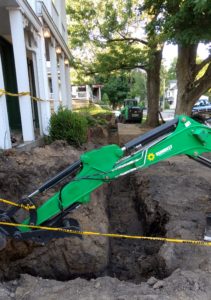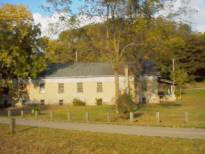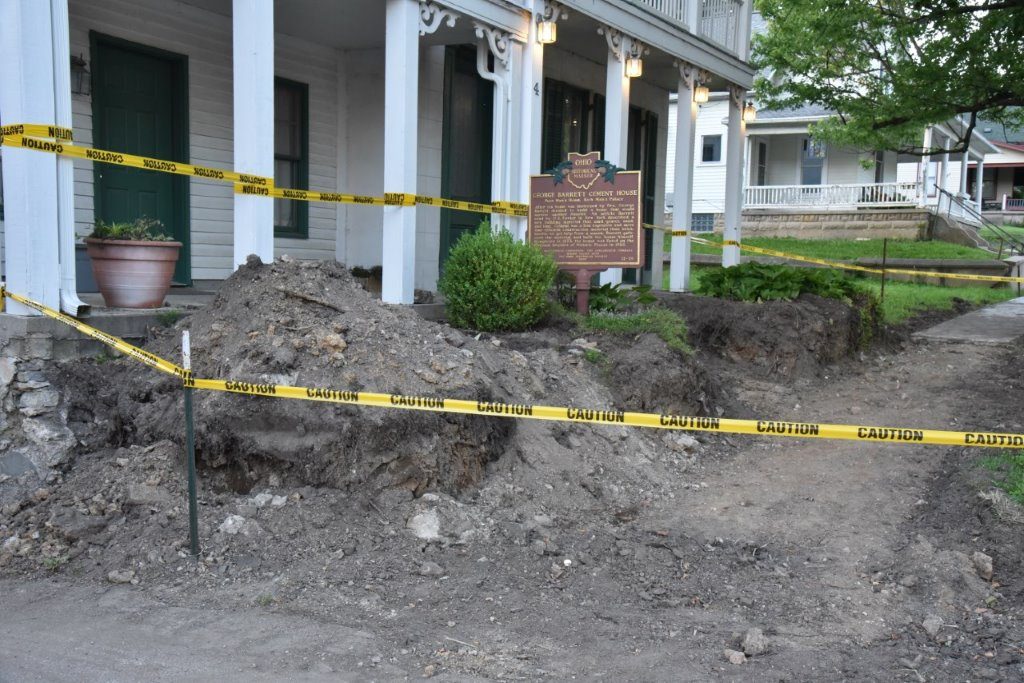The History of Spring Valley
Spring Valley was founded in 1844 by Edward Walton and his son Moses, Quakers from Virginia. The town’s location at the crossroads of two early transportation routes, the Cincinnati-Xenia Pike and the Little Miami Railroad, allowed Spring Valley’s founders to establish an agricultural marketing and processing center for the surrounding area. Prominent among these early families were the Barretts, farmers and landholders who arrived in Spring Valley from New York in the 1840s. George Barrett started a woolen mill in the town and a large flour mill northeast of the village. Moses Walton and Isaac M. Barrett, George Barrett’s son, were partners in the production and national distribution of smoked meats and woolen and flax products.
By 1860, the village was thriving, with a hotel and livery, a tannery, coopers shop, two blacksmiths, a carriage and wagon maker, two grocers, a shoemaker, three dry goods merchants, two cabinetmakers, and two physicians.
Built on a slope rising from the banks of the Little Miami River, Spring Valley benefited from many natural springs. In the early 20th century, an interurban trolley line conducted passengers from Dayton and Bellbrook to Spring Valley to enjoy the area’s natural beauty and to partake of bottled “Okee” brand water from the springs.
Although some of the village’s early structures have been lost or altered, architectural intrusion has been minimal. The Little Miami Railroad stopped operations and has been converted to the Little Miami Scenic Bike Path. In 1954 State Route 42 was re-routed to bypass Main Street’s steep hill, allowing Spring Valley to retain the quiet character of a nineteenth century community
Download A Walking Tour of Spring Valley presented by The Spring Valley Historical Society.
The George Barrett Concrete House
2-4 East Main
1844 and 1853

“The Poor Man’s Home, and Rich Man’s Palace”
The George Barrett Concrete House (traditionally called the “Cement House” by Spring Valley residents) is one of the first concrete homes built in the Midwest. George Barrett moved from New England to Spring Valley in the 1840s. After experiencing fires in several wings of his home, he researched inflammable building materials and, with the help of a single carpenter, constructed the 2-story concrete portion of the house (the wing on the right), using river rock and concrete mortar reinforced with animal hair. Barrett wrote a book explaining its design and construction, entitled “Home for the Millions: The Poor Man’s Home, and Rich Man’s Palace, or, the Application of the Gravel Wall Cement to the Purpose of Building“.

The Woolen Mill
 Using the same construction materials, Barrett constructed a woolen mill from which he shipped wool blankets on the railroad running behind the building (the current Little Miami Scenic Trail). The mill stands in the large lot behind Bledsoe Park, on the west side of Terrace Avenue.
Using the same construction materials, Barrett constructed a woolen mill from which he shipped wool blankets on the railroad running behind the building (the current Little Miami Scenic Trail). The mill stands in the large lot behind Bledsoe Park, on the west side of Terrace Avenue.
A wave of concrete home construction followed in the Midwest in the late 1800s, but few such homes still exist; the Barrett House is one of the finest extant examples.
On the brink of condemnation in the 1990s, the Barrett House was purchased by Spring Valley ACTS; restoration is ongoing, largely through volunteer efforts. The house is individually listed on the National Registry of Historic Homes, and the Ohio Bicentennial Commission placed a marker explaining the house’s history in 2003.
A large room in the Concrete House is available for public meetings. The museum on the first floor of the concrete wing is open during the annual Potato Festival in October and occasionally throughout the year, with displays of Spring Valley historic artifacts which are curated by ACTS on behalf of Spring Valley’s residents. For information, use of the meeting room, or donations to the archives, contact Spring Valley ACTS, Inc., P.O. Box 26, Spring Valley, OH 45370; or call 937-862-5250.

